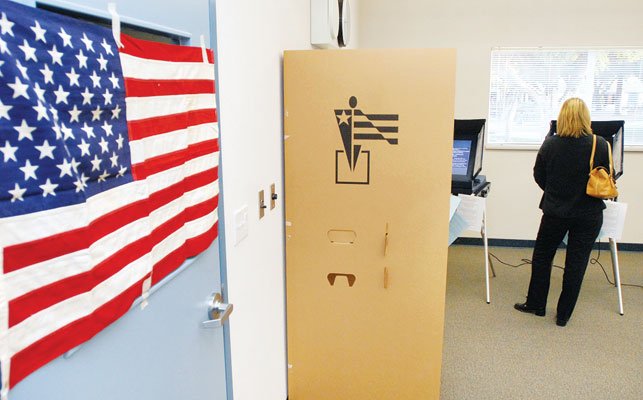Is it worth nearly $150,000 to give the current councilmembers
an extra year in office?
Is it worth nearly $150,000 to give the current councilmembers an extra year in office?
The council split on the issue earlier this month when it voted 4-3 to put a measure on the November ballot that would shift Gilroy’s election cycle from odd to even years. This would most likely involve lengthening current councilmembers’ terms by one year, meaning those up for election in 2009 would move to 2010, and those up in 2011 to 2012. If four years is enough for a councilmember, the body agreed that it could appoint a replacement for the extra year.
At the heart of the debate is whether the city should save money on election costs by piggy-backing on state and federal ballots. Gilroy spent nearly $150,000 more than Morgan Hill did in 2006 to hold an identical election last November, and currently Gilroy can only consolidate its election costs with four other special districts and cities in the county, according to City Clerk Shawna Freels.
Mayor Al Pinheiro and Councilmembers Dion Bracco, Cat Tucker and Peter Arellano argued that saving money is sensible, and even years means a larger, more diverse pool of voters choosing the council because of the greater turnouts that presidential and gubernatorial races command.
Not worth it, said Councilmen Perry Woodward, Bob Dillon and Craig Gartman.
Sure, it will save money, they conceded, but the shift will also drown out the council race and confuse voters with a busier ballot. It could also increase campaigning costs for local candidates who spent a record amount last year: They will pay even more to distinguish themselves in a sea of signs for state, federal and school board candidates.
“Fiscal responsibility is something I’ve always looked out for, but it goes back to an old saying, ‘Penny wise and pound foolish,’ ” Gartman told the council April 7. He also pointed to precedence: In the November 1974 election, voters approved an amendment to the city charter to shift from even- to odd-year elections “to allow people and candidates to focus on important issues so the voter out there can understand,” Gartman said. This year’s measure would be another amendment to that charter section and would temporarily supersede a separate section specifying four-year term limits.
Either way, voters understand more than Gartman and Dillon give them credit for, argued Bracco and Arellano.
“I really don’t believe that the voters aren’t going to find our city election on (an even-year) ballot. Let’s give them credit here. They’re intelligent,” Bracco said.
The lure of demographics effectively convinced Tucker.
“In addition to fiscal responsibility, this year the most college-aged students are coming out for the presidential race, and we need to engage our youth,” she said.
But “the bottom line is $137,000,” Arellano said. “Is this the best way to spend taxpayers’ money?”
Speaking from even-year experience, Gilroy School Board President Rhoda Bress said she did not feel as though she was drowning in state and federal affairs during her 2004 campaign.
“If the purpose of an election is to gauge community sentiment, the best time to do that is when you have higher voter turnout. People are in a more politically aware moment in their lives then,” Bress said “I didn’t have an experience of voters misunderstanding what I was running for, and an additional plus is the cost effectiveness of consolidating elections.”
The council will vote to call for a November election in May when staff returns with a resolution. If that resolution passes, then the body will draft the measure’s language and consolidate costs by asking the county to run the election. All this must be done by July so the county can have the measure before Aug. 8, the deadline for November ballot submissions, according to City Clerk Shawna Freels.
While lengthening terms is one way to put the council on track for even year elections, so is shortening them. But this idea proves tricky because if the voters were to approve a measure that instead subtracts a year from councilmembers’ terms, then those up for re-election in 2009 would be cut down to ’08 and – Oops! – would have just missed their opportunity to run.
“It would’ve worked out if we would’ve done this last year in November,” Arellano said. “But now that we’ve waited, the only thing we can do, really, that works out for everybody is lengthening (our terms), and if there’s a problem with lengthening it, then you can step down,” and the council will appoint somebody for one year.
Another option, which Woodward floated, would be to phase in the shift by having candidates run for special, five-year terms in 2009 and 2011. That way everything would be on track by 2016.
“It is not appropriate for this council to extend its own terms,” Woodward said. “It’s all much cleaner if we simply defer it for candidates running in the future.”
Election costs
■ $195,579 – Cost to Gilroy for 11/2007 election of three council seats, mayoral seat and one ballot measure.
■ $50,184 – Cost to Morgan Hill for identical ballot in 11/06
■ 15,223 – Number of registered voters in Gilroy
■ 16,881 – Number of registered voters in Morgan Hill
■ $58,934 – Estimated cost for Morgan Hill to hold four races in November 2008
■ $97,000 – Estimated cost for Morgan Hill to hold four races and one ballot measure
■ $44,000-$54,000 – Estimated cost to Gilroy to have election measure on 11/08 ballot
Source: Gilroy city clerk’s office
Council members up for re-election in 2009
Dion Bracco, Craig Gartman and Peter Arellano
Council members up for re-election in 2011
Mayor Al Pinheiro, Perry Woodward, Bob Dillon and Cat Tucker















